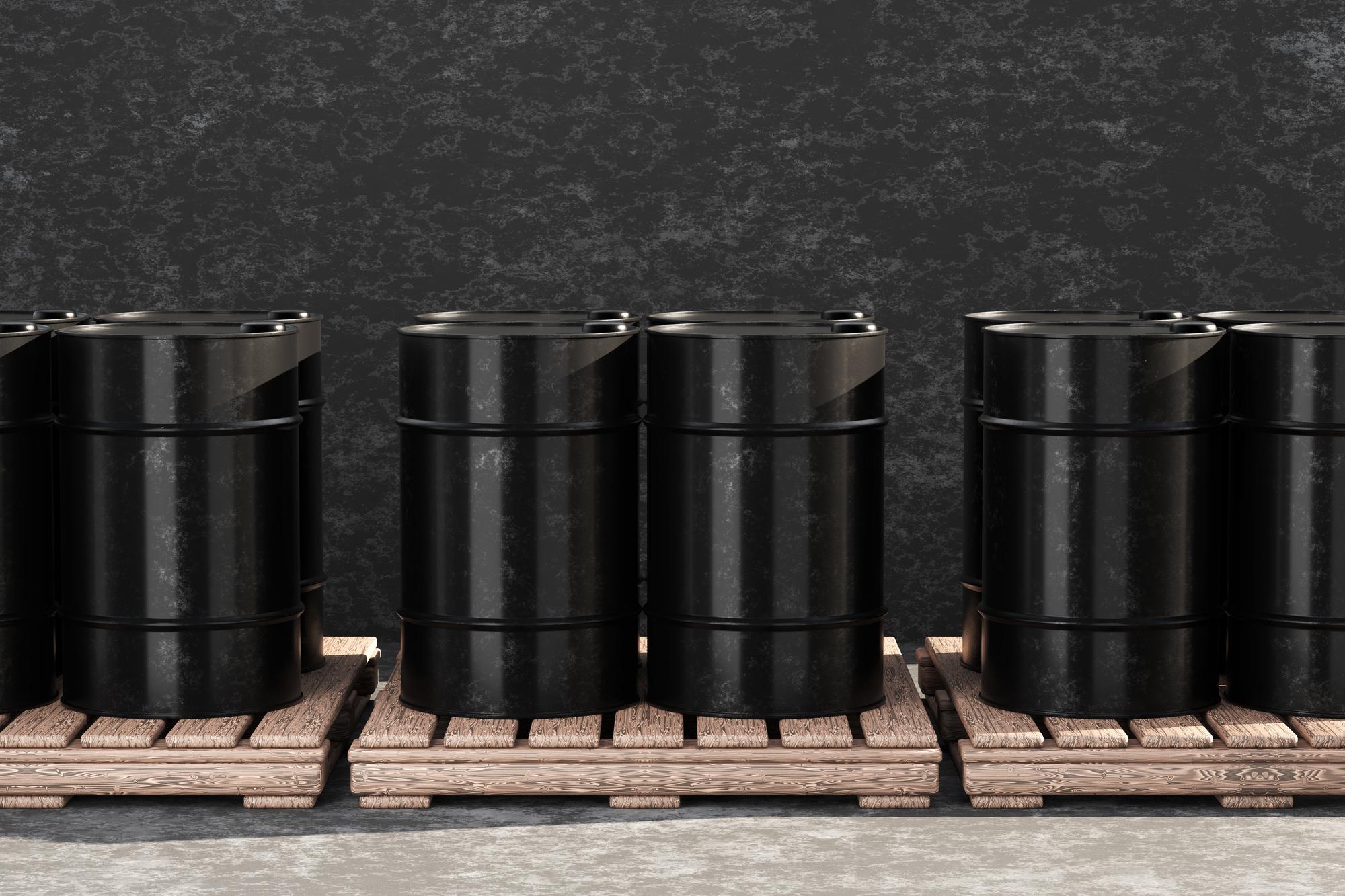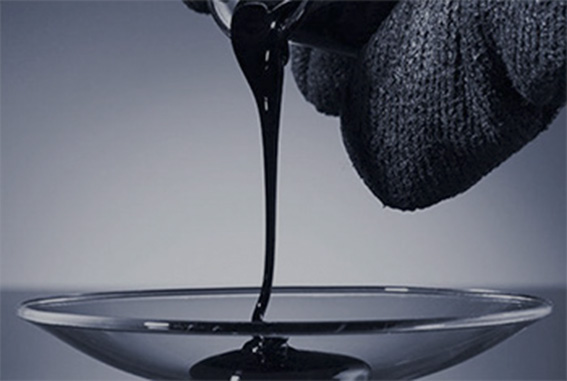1- Gilsonite (Natural Bitumen)
Gilsonite is natural bitumen with a shiny and smooth and solid appearance. Types of Gilsonite are classified based on their ash contents and the solubility in organic solvents.
Since it is a hard and brittle material, it is mostly used in powder form. Gilsonite composition is close to refinery bitumen.
Sometimes in the road construction industry, the combination of gilsonite with refined bitumen is used. Although it has a higher resistance to water penetration its degree of penetration and deformation is low.
Applications of Gilsonite
Printing industries
Painting industry
Drilling mud and cement
Asphalt and road construction
Casting sand additive
Chemical products
Improving the quality of bitumen
2- Penetration Grade Bitumen
Penetration bitumen is the most widely used bitumen for road construction.
After production in the refinery, it is classified by bitumen penetration test using a penetrometer apparatus. The deeper the needle penetrates into the bitumen surface, the softer it will be and suitable for colder weather. The most widely used bitumen for road construction is penetration bitumen of 60/70 grade and then grade of 80/100. Furthermore, 60/70 grade is widely used as a waterproofing material in buildings.
To use this bitumen, you should pay attention to the average temperature of the area and the amount of traffic.
3- Viscosity Grade Bitumen
3- Viscosity Grade Bitumen
Viscosity grade bitumen is classified based on its viscosity after production of the bitumen in the refinery. This classification is almost newer than penetration classification. The highest consumption of this bitumen is in India.
Viscosity bitumen has four different grades that are VG 10, VG20, VG30, and VG 40. They have different applications.
The reason for using viscosity grading instead of penetration is the change in viscosity of bitumen at high temperatures.
Here are some advantages of VG bitumen to Pen grades:
This grading system is designed to increase the accuracy of bitumen in hot temperatures. A specific grade of pen bitumen may show various results at a specific temperature, but VG bitumen behaves always the same.
When there is a need to predict bitumen behavior in the hottest time of the year as well as its properties in normal weather conditions, VG bitumen is a better choice. Since viscosity testing is based on experimenting with bitumen’s properties at three different temperatures (25° C, 60° C, and 135° C), all grades of VG bitumen come with an easier application.
4- Emulsion Bitumen
Bitumen emulsion gets its name from how it is produced. This type of bitumen is a chemical combination of bitumen and water.
It came to the industry to avoid the environmental damages of cutback bitumen. Since water is a reliable alternative to organic solvents to dilute bitumen sufficiently for special applications.
Emulsion bitumen is beneficial to waterproofing, spraying, and tack coats between layers of asphalt pavement.
Transporting, handling, and storing bitumen emulsion are all easy, economical, and safe.
Bitumen emulsions are classified based on two main factors:
Particles’ electrostatic charge
Breaking or setting time
According to their electronic charge, bitumen emulsions can be anionic (with a negative charge) and cationic (with a positive charge).
The second grading system is based on the time that is needed for a bitumen emulsion to lose water and become sticky enough to bind aggregates.
Various grades of bitumen emulsions have different properties, therefore, each type is suitable for a particular type of application.
Three factors, viscosity level, setting time, and electronic charge of bitumen particles, have an influence on where we use each grade and type of bitumen emulsions.
Bitumen emulsions are less viscous than other grades of bitumen because they are mixed with water and emulsifiers. As a result, we use this type of bitumen for spraying applications.
Bitumen emulsions are also ideal for pavement maintenance and renovating old roads.
Major applications of bitumen emulsions in today’s bitumen industry are tack coats, chip seals, slurry seals, and micro surfacing.
5- Cutback Bitumen
This bitumen is used in industries that require low viscosity bitumen. Cutbacks are also used in cases where bitumen can not be preheated to make asphalt.
To prepare cutback bitumen, penetration bitumen is mixed with organic solvents in a certain amount. These organic solvents include gasoline, naphtha, diesel oil, and furnace oil.
This type of bitumen is suitable for cold climates. The solvents evaporate when bitumen is used.
The cutback is suitable for primer sealing and sprayed sealing.
The only concern was the harm that cutback bitumen had, to the environment. The volatile solvents were hazardous to nature, humans, and the environment.
6- Oxidized Bitumen
Oxidized bitumen is obtained in the refinery by blowing hot air into the penetration bitumen. The oxidized bitumen obtained from this process is chemically stable and has high durability. It is also impermeable to water and is suitable for insulation.
Oxidized bitumen has a lower degree of penetration and higher softening point compared to pure bitumen. Also, it is classified based on these two properties.
Applications of oxidized bitumen include waterproofing in dam construction projects, buildings etc. Also, it is applicable in road construction in combination with other types of bitumen. In other industries, especially oil and gas, it is used to cover pipelines to prevent corrosion.
7- Performance Grade Bitumen (PG Bitumen)
Bitumen Performance Grade is a type of bitumen grading system according to its performance at different temperatures.
A bitumen that can endure at a wide range of temperatures is more suitable.
Classification of PG bitumen is done at high and low temperatures.
The major issue for high-temperature performance is rutting, which normally takes a while to amass. It takes some time for rutting to disappear.
At low temperatures the probability of cracking increases.
To evaluate bitumen’s performance, the average maximum and minimum environment temperatures at which asphalt will be made are chosen.
The bitumen is then exposed to these two temperatures for a week.
The average high and low temperature is increased by 6 °C.
The high temperature in these grades is in the range of 46 to 82 °C and the low temperature in the range is -46 to -10 °C.
Grading bitumen is based on a positive number and a negative number, which indicates the maximum and minimum temperature.
For instance, bitumen PG 64-10 meets the performance factor at an average seven-day maximum pavement temperature of 64 °C and also at a minimum pavement temperature of -10 °C.
If the sum of high and low temperature numbers is more than 90, it will be polymer modified bitumen, and if it is less than 90, it will be unmodified polymer bitumen.
As an example, a PG 76-22 is considered as a polymer-modified binder since the sum is 98. Another example, a PG 64-10 is an unmodified binder.
Thermal cracking is less likely to occur in PG grades 58-34, 64-22, 64-28, and 76-22. In addition, the PG 70-22, 70-28, 76-28, and 82-22 grades are more resistant to rutting.
Note: Due to the black color of asphalt and more heat absorption, the asphalt temperature can be 20 °C higher than the ambient temperature.
Performance grade bitumen is commonly used in construction and reconstruction pavement, sealing edges, sealing cracks in both dense and open grade Hot Mix Asphalt (HMA).









